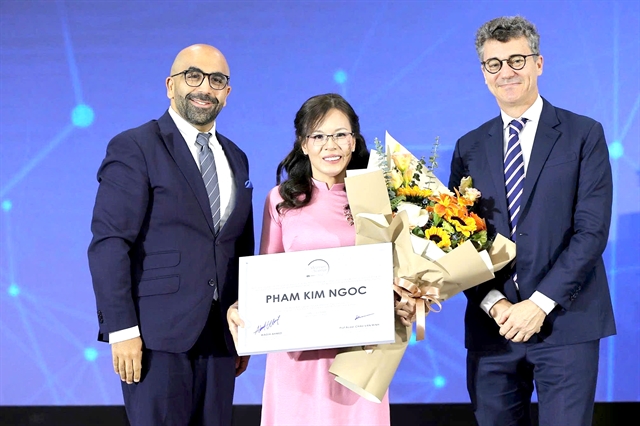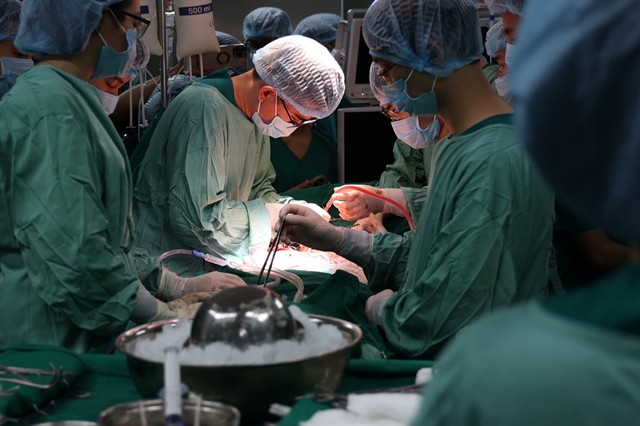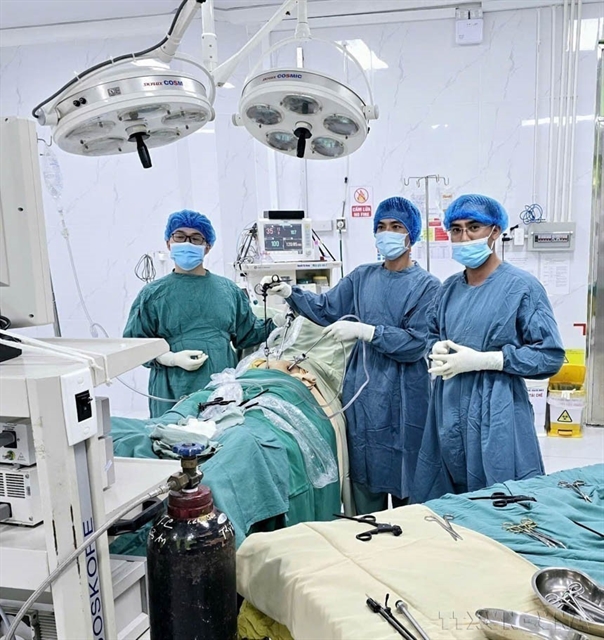 Society
Society

 |
| Thanh Nhàn Hospital (Hà Nội) performed its first organ retrieval from a brain-dead donor on December 7, 2024. VNA/VNS Photo |
Nguyễn Đình Anh*
With strong support from government investment, technological advancements, and the dedication of medical workers, Việt Nam’s health sector is at a pivotal moment.
This presents an opportunity for the country to meet the growing healthcare demands of its people. However, to fully capitalise on this potential, the sector must critically assess its challenges and implement transformative solutions to ensure sustainable development.
Việt Nam's healthcare system operates across four levels: commune, district, provincial, and central. Medical services are divided into three levels of care: primary, basic and specialised. Central hospitals in major cities such as Hà Nội and Hồ Chí Minh City serve as leading specialised centres for organ transplants, cancer treatment, and complex surgeries. While healthcare facilities extend to rural areas, they often lack sufficient equipment and medical staff, forcing many patients to travel long distances for treatment at higher-level hospitals.
In recent years, Việt Nam has made significant progress in healthcare, particularly during the COVID-19 pandemic, when the country demonstrated its ability to develop domestic vaccines, an achievement few nations have accomplished. Central hospitals continue to improve their services, integrating advanced techniques in cardiology, oncology, and organ transplantation.
However, challenges remain, particularly hospital overcrowding, unequal distribution of healthcare professionals, and disparities in service quality between urban and rural areas.
Leading hospitals like Bạch Mai [Hà Nội] and Chợ Rẫy [HCM City] continue to struggle with excessive patient loads, causing long wait times and placing immense pressure on medical staff. Financial constraints also limit investments in modern medical equipment and infrastructure.
A major concern is the shortage of highly skilled medical professionals, particularly in specialised fields such as organ transplantation, nuclear medicine, and cancer treatment. While the demand for expertise in these areas continues to grow, the number of qualified professionals remains limited.
The uneven distribution of medical workers between urban and rural areas further exacerbates the issue, with most specialists concentrated in major cities while remote regions face severe shortages.
 |
| A doctor from the Obstetrics Department at Thuận An City Medical Centre (Bình Dương) successfully performed three complex surgeries in a single afternoon of October 2024, reaffirming the high professional standards of medical staff at district-level hospitals. VNA/VNS Photo |
Recognising healthcare as a national priority, the government has significantly increased investment in public healthcare, building new hospitals, upgrading infrastructure, and expanding training programmes for medical personnel. Public-private partnerships are also encouraged to attract private investment, helping to improve healthcare facilities and expand access to high-quality medical services.
At the same time, Việt Nam is actively integrating into global healthcare networks, collaborating with international organisations such as the World Health Organization and participating in regional and global health forums. These efforts provide access to cutting-edge medical advancements and create opportunities for research, training, and technology transfer.
The digital revolution is opening new possibilities for Việt Nam’s health sector. Technologies such as AI and big data are transforming medical practices worldwide. AI-powered medical imaging, disease prediction, and electronic health records are enhancing diagnostic accuracy and treatment efficiency. Telemedicine is making it easier for patients in remote areas to connect with specialists in major cities, providing access to high-quality healthcare without the need for long-distance travel.
Despite these advancements, the sector continues to face challenges. An ageing population is increasing the demand for elderly care, requiring substantial resources for long-term treatment and social welfare.
Emerging infectious diseases, climate change, and environmental factors are also raising new health concerns, highlighting the need for stronger disease surveillance and prevention strategies.
 |
| A 21-year-old Vietnamese woman made a miraculous recovery after a lung transplant at the National Lung Hospital in early 2024. The success of this surgery marks a significant achievement in Việt Nam’s health sector, bringing immense benefits to patients and the wider community. VNA/VNS Photo |
To address these challenges and fully leverage new opportunities, Việt Nam’s healthcare system must undergo strategic reforms. Investment in medical technology and digital transformation will be crucial in improving service quality and optimising patient care.
The expansion of electronic health records, AI-driven diagnostics, and smart hospital systems will enhance efficiency and accessibility. Strengthening the medical workforce by expanding training programmes, fostering international collaborations, and offering incentives for doctors to work in underserved areas will ensure a more balanced healthcare system.
Developing a strong primary healthcare network is essential to reducing pressure on central hospitals. Upgrading commune- and district-level hospitals, alongside expanding preventive healthcare programmes and public health education, will improve early disease detection and management. At the same time, enhancing domestic pharmaceutical and medical equipment production will strengthen Việt Nam’s healthcare security and global competitiveness.
Expanding international cooperation will also play a key role in advancing Việt Nam’s health sector. Deeper engagement in global healthcare initiatives will allow the country to access the latest medical advancements, engage foreign investment, and enhance training and research opportunities for health professionals.
The adoption of cutting-edge medical technologies such as robotic surgery, AI-powered diagnostics, and genomic medicine will further improve treatment outcomes and quality of life for patients.
Việt Nam’s health sector stands at a crucial juncture, with immense opportunities for growth and innovation but also significant challenges to overcome. By implementing bold and strategic reforms, from technological advancements and workforce development to infrastructure expansion and international partnerships, Việt Nam can build a resilient, efficient, and high-quality health system that meets the needs of its people in this new era.
*Nguyễn Đình Anh is head of the Department of Communication and Work Emulation and Reward under the Ministry of Health.



.jpg)
.jpg)